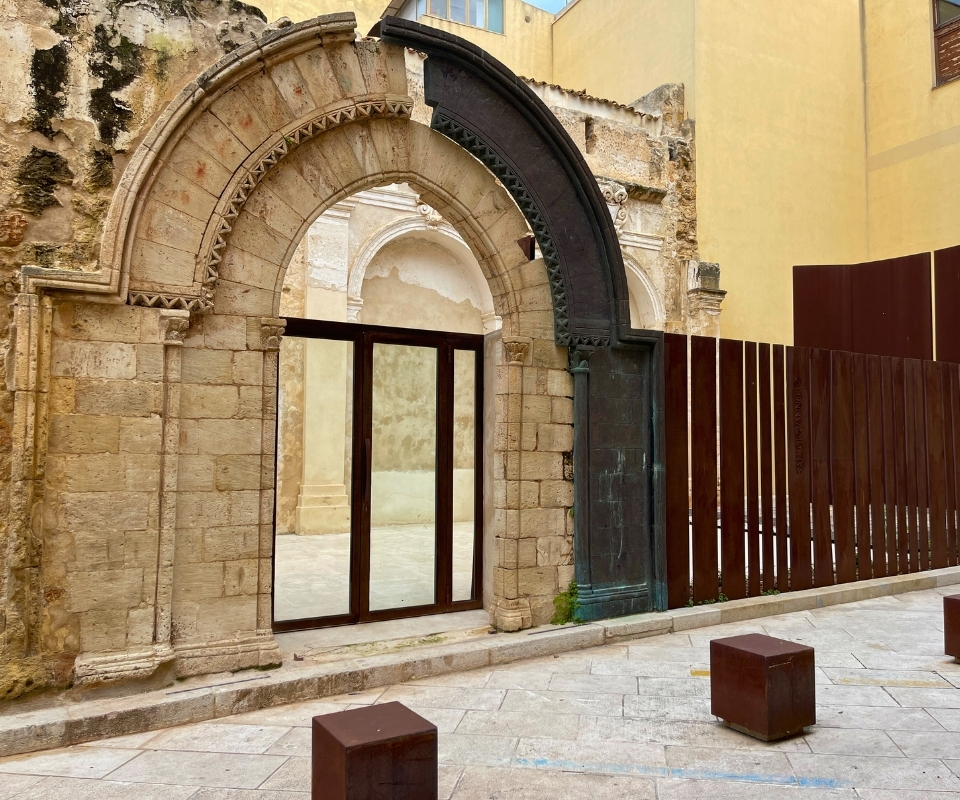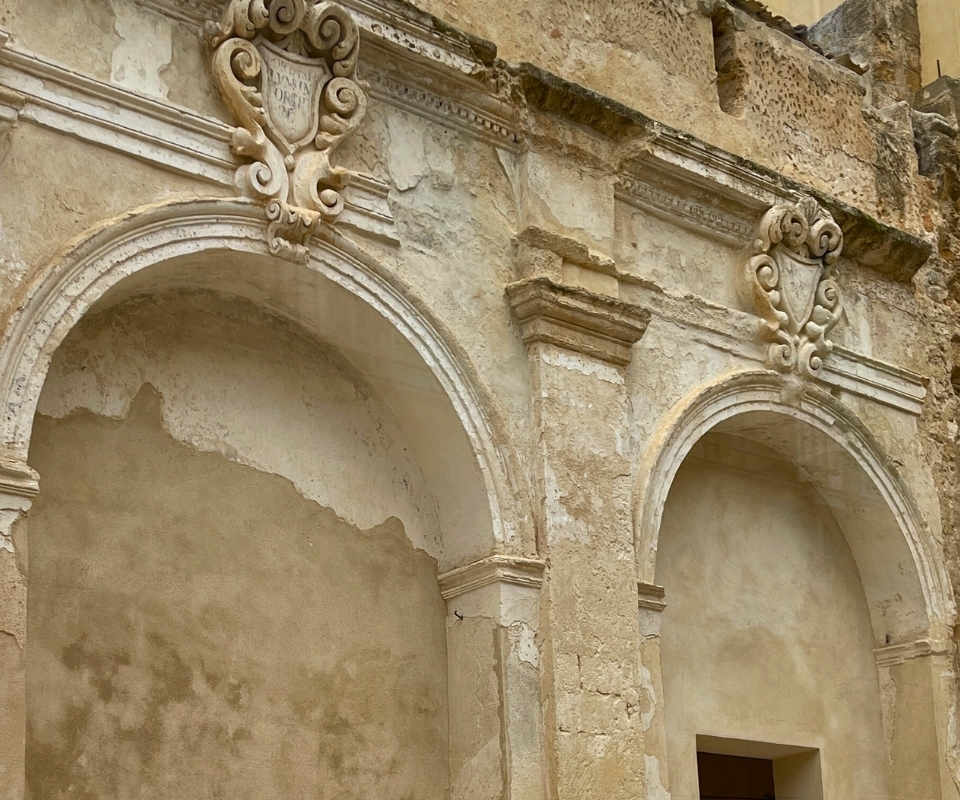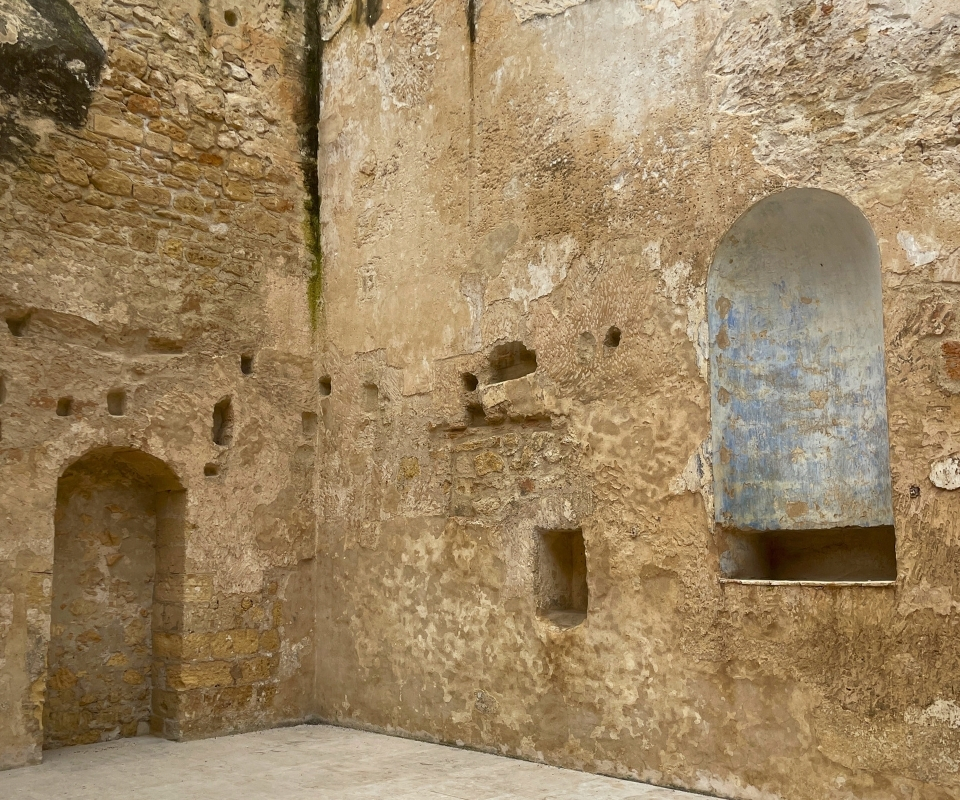The former Church of San Giovannello stands in the historic center of Marsala, on Via Andrea D’Anna, just a short distance from the Chiesa Madre (Cathedral). It was built in the fourteenth century at the request of the Chiaramonte family and was originally dedicated to Saint John the Baptist Beheaded. Smaller in size compared to the larger church of the same name located outside the city walls (on the Boeo waterfront), it was popularly called “San Giovannello” precisely to distinguish it from the larger church. In fourteen forty-one, the building was entrusted to the Confraternity of Saint John, and at the beginning of the eighteenth century, it came under the patronage of the Barbers’ Guild, the ancient corporation of city barbers. Between the seventeenth and eighteenth centuries, the interior underwent a radical renovation in Baroque style, with the addition of two small side chapels within the thick walls and rich stucco decorations—frames, cartouches, and floral motifs—typical of the period.
The church’s history took a dramatic turn in 1943: during the Allied bombing of May eleventh, Marsala suffered heavy damage, and the building was almost entirely destroyed. The explosion caused the total collapse of the apse area and large sections of the perimeter walls; the roof was lost, leaving the interior exposed to the elements. Even before the war, the building had experienced a period of decline and disuse: during the nineteenth century, it had been deconsecrated and rented out by the municipality to private individuals, later passing into the hands of the San Biagio Civic Hospital and eventually to the local ASL (Health Authority).
Reduced to ruins after World War II, the church remained abandoned for decades, with its few surviving elements—such as the fine Gothic portal—left to decay. Only in recent years has a comprehensive restoration and enhancement project been initiated. As early as the nineteen fifties, Marsala architect Domenico Nuzzo carried out an initial intervention, cataloging and dismantling the fourteenth-century portal’s stone blocks for future reassembly, but the work soon came to a halt. Decades later, in twenty eighteen, the municipality entrusted his son, architect Giovanni Nuzzo, with the task of completing the restoration and returning the ancient building to the city.
The project, completed in twenty twenty, consolidated the original surviving structures and integrated the missing parts with contemporary architectural solutions of great visual impact. The elegant Chiaramonte Gothic portal on the façade was reconstructed and completed with a bronze fusion, filling in the missing sections of the ogival arch in a way that remains recognizable yet respectful of the historical structure. Where the perimeter walls had collapsed, thin vertical panels in corten steel were installed, placed side by side to suggest the volume of the missing walls. These metal elements, with their characteristic rust-brown color, create a striking contrast with the ancient stone and have gaps that allow visitors to glimpse the interior from the outside. At the far end of the nave, where the destroyed apse once stood, a large curved corten steel wall has been placed, evoking the original semicircular shape and serving as a scenic backdrop for cultural activities.
Today, the former Church of San Giovannello has been revitalized as an open-air cultural space. The unique combination of ancient structures and modern elements makes it an ideal venue for social and cultural events: it hosts art exhibitions, book presentations, chamber music concerts, and other cultural activities that enrich Marsala’s artistic life. The long-forgotten remains of this sacred building have thus found new life as a meeting place and creative hub, where the community can gather, surrounded by centuries of history. The spaces adjacent to the church, which once served as the sacristy, have been repurposed to provide support facilities, making the site fully functional and suitable for hosting public events.
From a tourist perspective, the former Church of San Giovannello offers a unique and evocative experience. Upon entering, visitors can admire the finely carved fourteenth-century Gothic portal, and looking upward, they can see the sky where the roof once stood—a striking sight that emphasizes the “open-air” character of the site. The remaining Baroque decorations on the walls, combined with the new corten steel and bronze additions, visually narrate the layered history of the building, from medieval times to the present.
At night, a custom-designed lighting system highlights the architectural details and casts beams of light through the corten steel panels, inviting passersby to take a closer look inside.
360° Virtual Tour
How to get there






